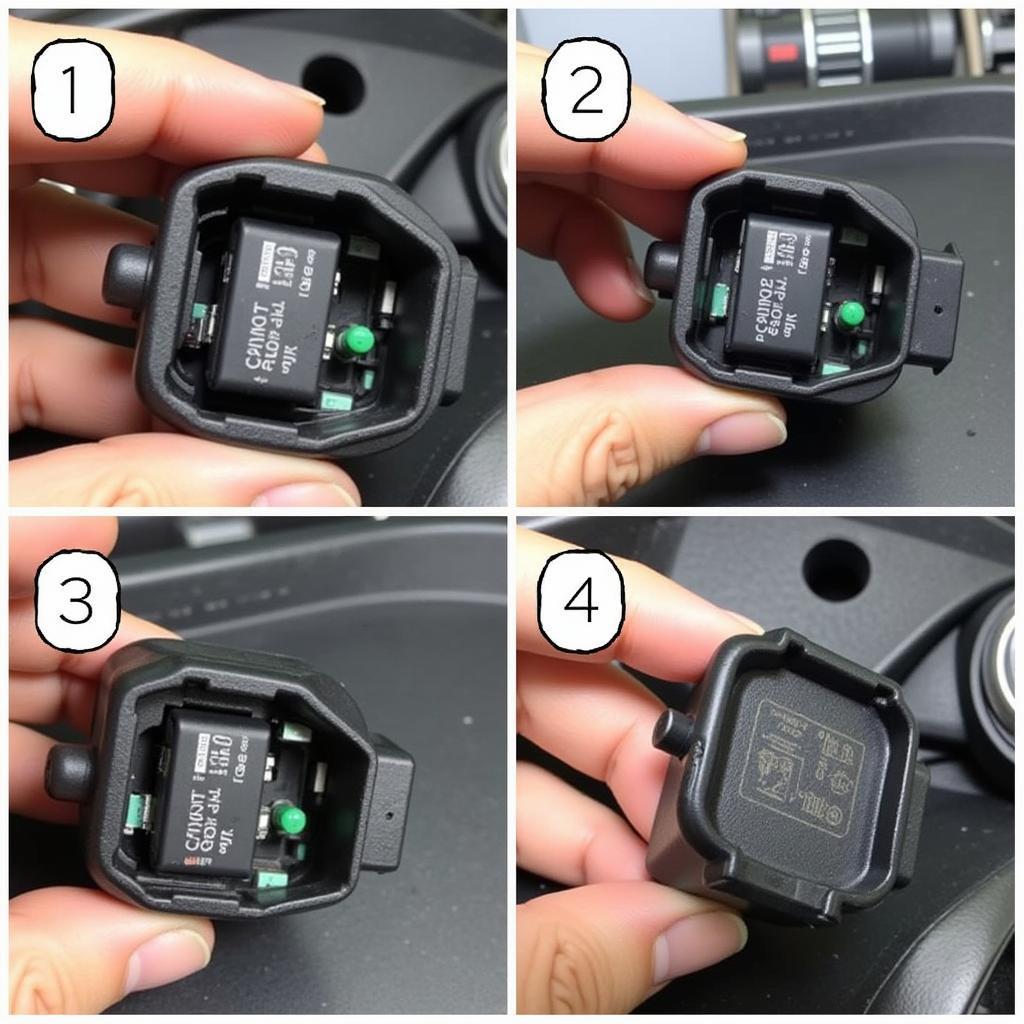Car relays are small but mighty components of your vehicle’s electrical system. They act as switches, controlling everything from your headlights and fuel pump to your air conditioning and power windows. When a relay malfunctions, it can cause a wide range of problems, from minor inconveniences to major headaches. This article will delve into common Car Relay Problems, how to diagnose them, and how to fix them, empowering you to take control of your car’s electrical health.
Similar to a car light wiring problem, a faulty relay can lead to unexpected malfunctions. Relays are electromechanical devices that use a small control current to switch a much larger current. This allows a low-current circuit, like the one activated by your car key, to control high-current components like the starter motor. When a relay fails, the circuit it controls is effectively broken, leading to the component malfunctioning.
Common Symptoms of Car Relay Problems
Several symptoms can indicate a faulty relay. These symptoms can range from intermittent issues to complete component failure. Some of the most common signs include:
- Clicking Sounds: A rapidly clicking sound coming from the relay box is a classic sign of a failing relay. This indicates the relay is attempting to engage but is unable to maintain a connection.
- Component Malfunction: If a specific component, like the headlights, fuel pump, or horn, stops working, a faulty relay could be the culprit.
- Intermittent Problems: If a component works sometimes and not others, this could indicate a failing relay that is intermittently making and breaking the connection.
- Burned Relay: A visual inspection of the relay might reveal burn marks or a melted casing, indicating an internal short circuit.
- Overheating: A hot relay, even after a short period of use, can indicate a problem.
Diagnosing Car Relay Problems
Diagnosing a car relay problem involves a systematic approach to isolate the faulty component. Here’s a step-by-step guide:
- Identify the Suspect Relay: Locate the relay box in your car (usually under the hood or dashboard) and consult your owner’s manual to identify the relay associated with the malfunctioning component.
- Visual Inspection: Check the relay for any visible signs of damage, such as burn marks or melting.
- Relay Swap: Swap the suspect relay with a known good relay of the same type. If the problem resolves, the original relay was faulty.
- Voltage Test: Use a multimeter to test the voltage at the relay terminals. This will help determine if the relay is receiving the correct power and ground.
- Jump the Relay: Carefully bypass the relay by temporarily connecting the appropriate terminals. If the component functions correctly, the relay is likely the problem. However, exercise extreme caution when jumping a relay, as it involves working with live circuits.
This process can be challenging, especially for those unfamiliar with car electrics. Just like diagnosing car wont start fuel problems, it requires a methodical approach.
Replacing a Car Relay
Replacing a car relay is a simple and inexpensive fix that can often be done at home.
- Locate the Relay Box: Identify the relay box and the specific relay you need to replace.
- Remove the Old Relay: Gently pull the old relay straight out of the socket.
- Install the New Relay: Insert the new relay into the socket, ensuring it is firmly seated.
 Replacing Car Relay
Replacing Car Relay
Remember, much like understanding 1999 lincoln town car fuel pump problems, understanding your specific car model is important. While the general principles are similar, specific locations and procedures may vary.
Preventing Car Relay Problems
While relays have a limited lifespan, certain practices can help prevent premature failure:
- Regular Inspections: Periodically inspect the relay box for any signs of corrosion or damage.
- Proper Wiring: Ensure all wiring connections are secure and free from corrosion.
- Avoid Overloading Circuits: Don’t connect too many devices to a single circuit, which can overload the relay.
If you encounter persistent car relay problems or are uncomfortable working with electrical components, it’s always best to consult a qualified mechanic. They have the expertise and equipment to diagnose and repair complex electrical issues.
Conclusion
Car relay problems can be frustrating, but with a little knowledge and patience, they are often easy to diagnose and fix. By understanding how relays work and how to troubleshoot them, you can save yourself time and money. Remember to always prioritize safety when working with electrical components. For persistent or complex issues, don’t hesitate to seek professional help. Contact AutoTipPro at +1 (641) 206-8880 or visit our office at 500 N St Mary’s St, San Antonio, TX 78205, United States for expert advice and assistance.
Similar to understanding 2008 lincoln town car problems and complaints, understanding the function and location of components is crucial for troubleshooting. Understanding the wiring and the relay box layout can be immensely helpful. So, familiarize yourself with your car’s electrical system to effectively address any future issues.
Just like the complexities involved in understanding why an eps lexus problem car wont move, diagnosing car relay problems requires a systematic approach and a clear understanding of the underlying principles. Don’t let these small components bring your car to a standstill. With the information presented here, you’re well-equipped to tackle car relay problems head-on.




Leave a Reply